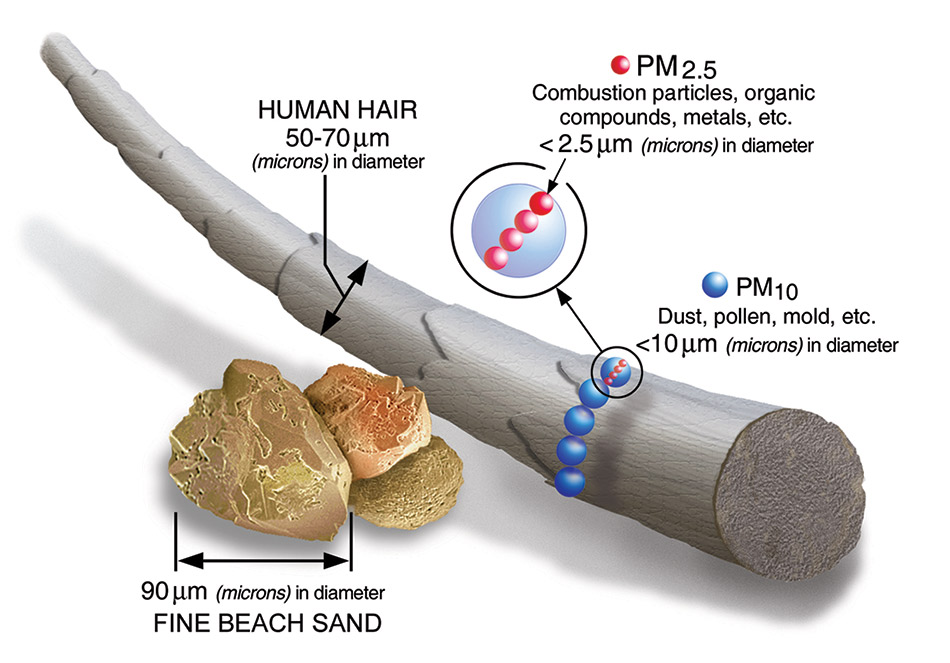Air Quality Alert in Metro Atlanta: A Report on Sustainable Development Goal Implications
SDG 3: Good Health and Well-being
A Code Orange Air Quality Alert has been issued for metro Atlanta, indicating a direct risk to public health, a primary focus of SDG 3. The air quality is officially designated as unhealthy for sensitive groups, necessitating public health advisories.
- Vulnerable Populations Identified:
- Persons with respiratory issues, including asthma.
- Children and teenagers.
- Older adults.
- Individuals engaged in outdoor activity for six or more hours per day.
- Recommended Action: Affected individuals are advised to limit time spent outdoors to mitigate adverse health effects.
SDG 11: Sustainable Cities and Communities
The alert highlights challenges in maintaining safe and sustainable urban environments, a key target of SDG 11. Air quality is a critical indicator of urban environmental health, measured by the Air Quality Index (AQI).
- Code Orange Designation: Issued when the AQI is between 101 and 150.
- AQI Benchmarks:
- A value of 50 or below is considered healthy.
- A value over 300 represents hazardous air quality.
SDG 13 & SDG 7: Climate Action and Clean Energy
The pollutants causing the degraded air quality are directly linked to broader climate and energy concerns, aligning with SDG 13 and SDG 7. The Environmental Protection Agency identifies five major pollutants that impact air quality, many of which are byproducts of fossil fuel combustion.
- Ground-level ozone
- Particle Pollution
- Carbon monoxide
- Sulfur dioxide
- Nitrogen dioxide
Addressing these pollutants is integral to both immediate public health and long-term climate action strategies. Citizens can monitor local data via AirNow.gov.
Analysis of Sustainable Development Goals in the Article
1. Relevant Sustainable Development Goals (SDGs)
-
SDG 3: Good Health and Well-being
- The article directly addresses public health by issuing a “Code Orange Air Quality Alert” and warning that the air is “unhealthy for sensitive groups.” It specifically mentions health risks for “people with respiratory issues such as asthma, children and teens, older adults,” which aligns with the goal of ensuring healthy lives and promoting well-being for all at all ages.
-
SDG 11: Sustainable Cities and Communities
- The issue is localized to a specific urban area, “metro Atlanta.” Poor air quality is a significant environmental challenge for cities. The article’s focus on monitoring and reporting on urban air pollution connects directly to the goal of making cities and human settlements inclusive, safe, resilient, and sustainable.
2. Specific Targets Identified
-
Target 3.9: By 2030, substantially reduce the number of deaths and illnesses from hazardous chemicals and air, water and soil pollution and contamination.
- The article’s entire purpose is to mitigate the health impacts of air pollution. The warning for sensitive groups to “limit their time outside” is a direct action to prevent illnesses resulting from exposure to the hazardous air pollutants listed, such as ground-level ozone and particle pollution.
-
Target 11.6: By 2030, reduce the adverse per capita environmental impact of cities, including by paying special attention to air quality and municipal and other waste management.
- The article highlights a city’s effort to manage and communicate the adverse environmental impact of poor air quality. The issuance of an Air Quality Alert for “metro Atlanta” demonstrates a focus on the specific challenge of air quality within an urban environment, which is the core of this target.
3. Indicators for Measuring Progress
-
Indicator 3.9.1: Mortality rate attributed to household and ambient air pollution.
- While the article does not provide mortality statistics, it implies the risk of severe health outcomes by classifying the air as “unhealthy” and noting that an AQI over 300 is “hazardous.” The Air Quality Index (AQI) itself, with its different levels of health concern, serves as a proxy indicator for the potential health burden, including illness and death, from ambient air pollution.
-
Indicator 11.6.2: Annual mean levels of fine particulate matter (e.g. PM2.5 and PM10) in cities (population weighted).
- The article explicitly mentions “Particle Pollution” as one of the five major pollutants measured by the Environmental Protection Agency to determine air quality. The AQI value of 101 to 150 is a direct reflection of the concentration of these pollutants, including particulate matter. Therefore, the AQI reported in the article is a direct, real-time measure related to this indicator.
Summary Table: SDGs, Targets, and Indicators
| SDGs | Targets | Indicators |
|---|---|---|
| SDG 3: Good Health and Well-being | 3.9: By 2030, substantially reduce the number of deaths and illnesses from hazardous chemicals and air, water and soil pollution and contamination. | 3.9.1: Mortality rate attributed to household and ambient air pollution (Implied by the health warnings and the classification of air as “unhealthy” and potentially “hazardous”). |
| SDG 11: Sustainable Cities and Communities | 11.6: By 2030, reduce the adverse per capita environmental impact of cities, including by paying special attention to air quality… | 11.6.2: Annual mean levels of fine particulate matter (e.g. PM2.5 and PM10) in cities (Implied through the mention of “Particle Pollution” and the use of the Air Quality Index (AQI) value of 101-150 as a measurement). |
Source: wsbtv.com







